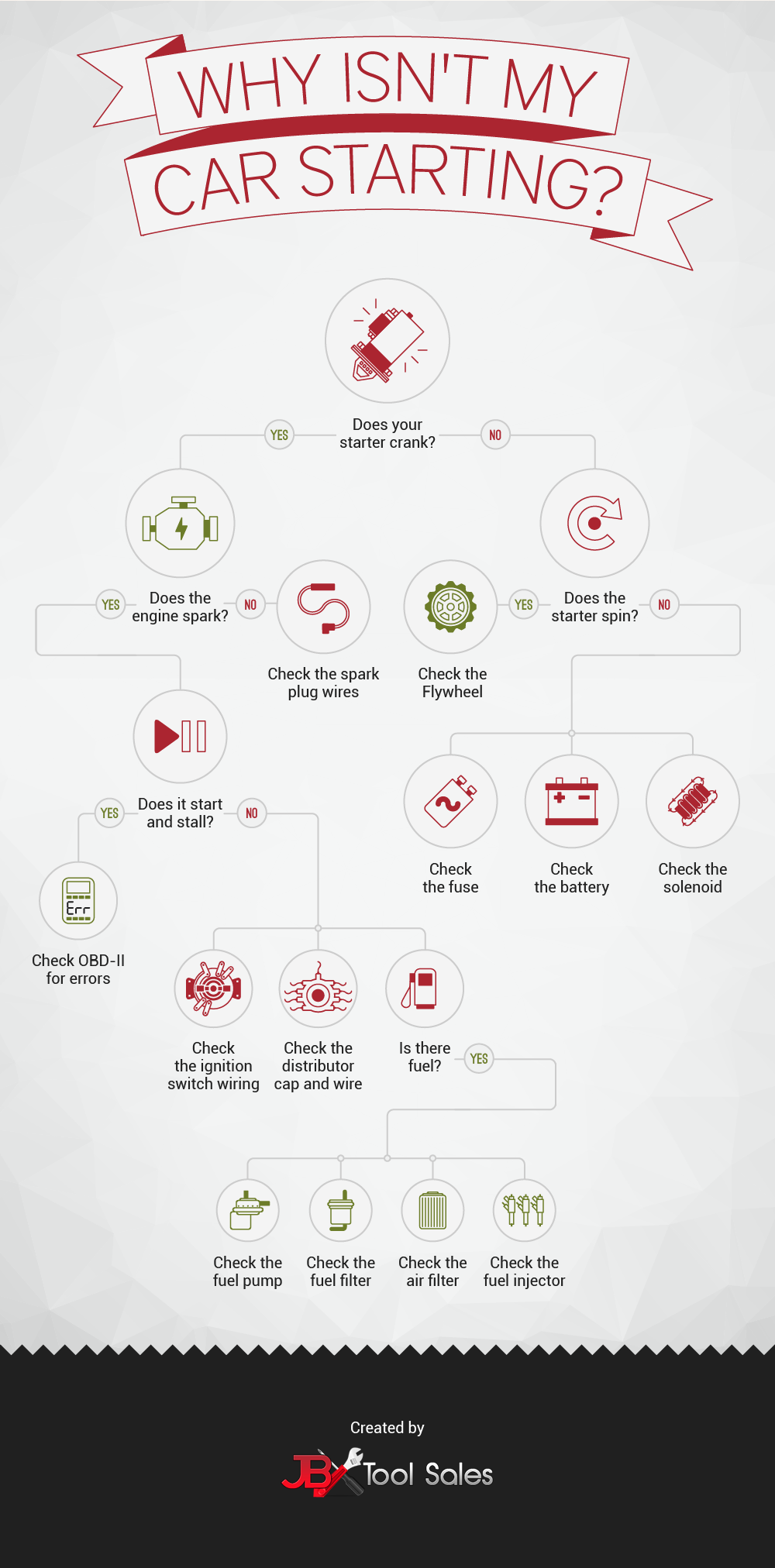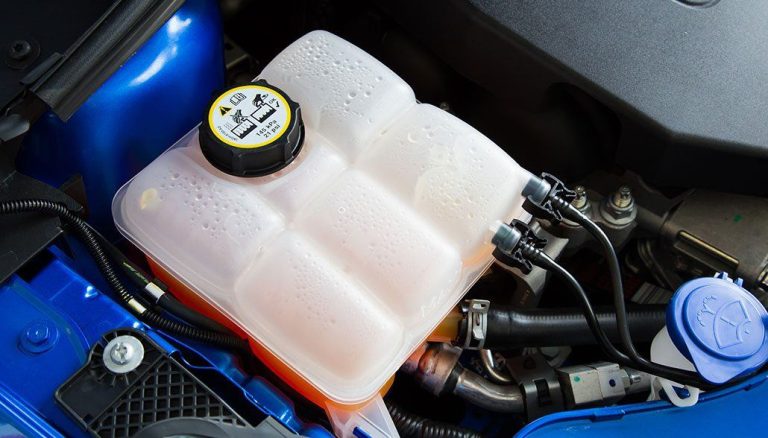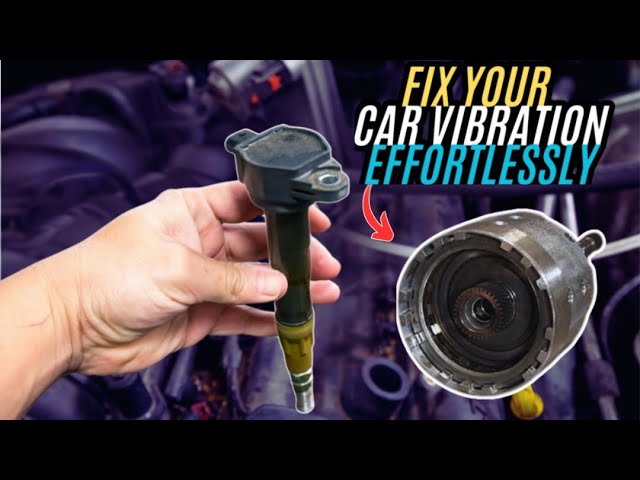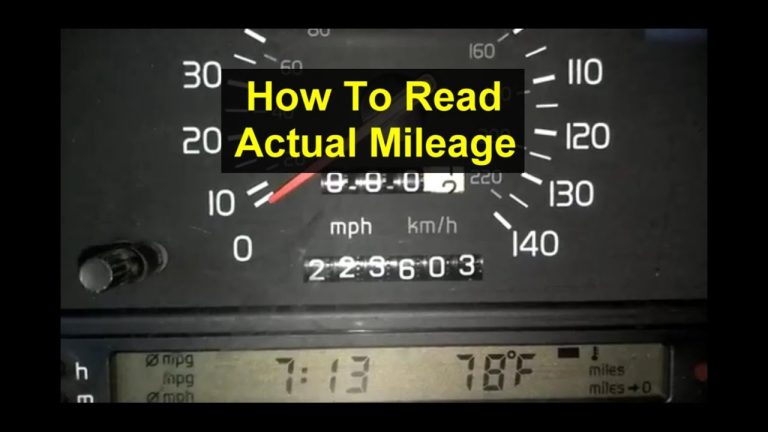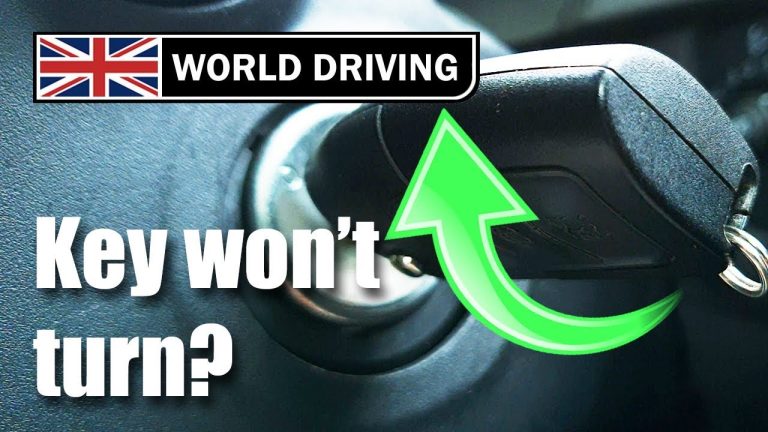Why Won’t My Car Start? Uncover Hidden Causes
Your car won’t start due to common issues like a dead battery, faulty starter, bad ignition switch, empty fuel tank, or clogged fuel filter. Sometimes, problems with the alternator, security system, or corroded battery terminals can also prevent the engine from starting, even if the lights and electronics work.
Nothing happens. Frustrating, isn’t it? You’re left wondering why your trusty vehicle has suddenly decided to take a break. If you’re tired of the mystery and want answers fast, you’re in the right place. Whether it’s a simple fix or something more serious, understanding the reasons why your car won’t start can save you time, money, and a whole lot of stress.
Dive into this article and unravel the secrets behind your car’s silence, and get back to driving with confidence.
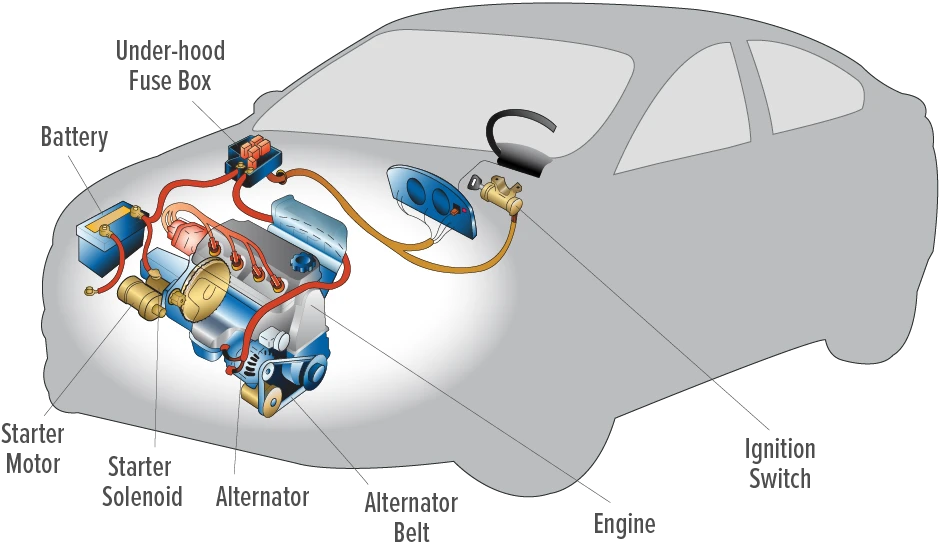
Credit: www.lesschwab.com
Why Won’t My Car Start?
Battery Issues
| Cause | Symptoms | Quick Solution |
|---|---|---|
| Dead Battery | No crank, dim lights, clicking sound | Jump-start or replace the battery |
| Faulty Starter Motor | Clicking noise, engine won’t turn over | Check and replace the starter if needed |
| Bad Ignition Switch | No dashboard lights, car won’t crank | Test and replace the ignition switch |
| Empty Fuel Tank | Engine cranks but won’t start | Refuel the car |
| Clogged Fuel Filter | Rough idle, car struggles to start | Replace the fuel filter |
| Alternator Failure | Battery dies frequently, dim lights | Test and replace the alternator |
| Corroded Battery Terminals | No start or weak electrical power | Clean terminals and check battery connections |
| Blown Fuse | Certain electronics won’t work | Inspect and replace faulty fuses |
| Security System Lockout | Key won’t turn or engine won’t start | Reset or repair the security system |
Is Your Battery Dead?
A dead battery is often the culprit when your car fails to start. Check if the interior lights and dashboard indicators turn on. If they’re dim or non-responsive, your battery might be dead. Consider jump-starting it with another vehicle or a portable battery pack.
Corroded Battery Terminals
Corrosion on battery terminals can disrupt the flow of electricity. Open the hood and inspect the battery terminals for a white, powdery substance. You can clean them using a mixture of baking soda and water. Don’t forget to wear gloves and safety goggles.
Loose Or Damaged Cables
Loose or damaged cables can prevent your battery from working properly. Tug gently on the cables to check if they’re firmly attached. If they’re loose, tighten them with a wrench. If damaged, consider replacing them to ensure a reliable connection.
Old Battery Age
How old is your battery? Car batteries typically last between 3 to 5 years. If your battery is older, it might be time for a replacement. You can check the manufacturing date on the battery label for guidance.
Extreme Weather Impact
Weather can affect battery performance. Cold temperatures can slow down the chemical reactions within the battery, reducing its power. If you live in a cold climate, invest in a battery warmer to keep it functioning efficiently.
Testing The Battery
Test your battery’s voltage using a multimeter. A fully charged battery should read around 12.6 volts or higher. If it’s lower, the battery might need recharging or replacement. Check local auto shops for testing services if you don’t have a multimeter.
Seeking Professional Help
If you’ve tried everything and your car still won’t start, it might be time to consult a mechanic. They can diagnose complex issues that might be beyond DIY fixes. Have you ever overlooked a battery problem that turned out to be something else? Share your thoughts in the comments below.
Understanding battery issues can help you avoid unnecessary stress and expenses. Next time your car won’t start, you’ll know where to look first.
Starter Motor Problems
Starter motor problems can stop your car from starting smoothly. The starter motor is crucial for igniting the engine. Without it, the engine won’t turn over. Understanding starter motor issues can help diagnose and fix the problem. Let’s explore common starter motor problems.
Worn Out Starter Motor
A worn-out starter motor won’t function properly. Over time, the motor’s components degrade. This can lead to failure. Regular maintenance can prevent wear and tear. Listen for clicking sounds when starting the car. This noise often indicates a worn motor. If you hear it, the motor may need replacement.
Electrical Connection Issues
Loose or corroded connections can disrupt power flow. The starter needs a strong electrical connection to work. Check the battery cables for tightness. Clean any corrosion on terminals. Poor connections can prevent the starter from engaging. Ensure all connections are secure and clean.
Faulty Solenoid
The solenoid acts as a bridge between the battery and starter. If it fails, the starter won’t receive power. This leads to a no-start condition. Listen for a clicking sound when turning the key. This sound suggests a faulty solenoid. Replacing the solenoid can restore functionality.
Dead Battery
A dead battery can’t provide power to the starter. Without power, the starter remains inactive. Check the battery’s charge with a voltmeter. Low voltage indicates a weak battery. Jump-starting the car can confirm battery issues. If it starts, the battery likely needs replacement.
Overheating Starter
An overheating starter can cause significant problems. Excessive heat damages internal components. This can lead to a malfunction. Heat often results from prolonged cranking. Avoid cranking the engine for too long. If the starter feels hot, allow it to cool before trying again.
Fuel System Failures
Fuel system failures can prevent a car from starting. Clogged fuel filters or faulty fuel pumps block fuel flow. This disruption stops the engine from getting necessary fuel, making ignition impossible. Regular maintenance can prevent these issues and keep your car running smoothly.
Fuel system failures can be a frustrating reason why your car refuses to start. Often overlooked, the fuel system is vital for your vehicle’s operation. Without proper fuel delivery, even a brand-new car can leave you stranded.
Common Fuel System Issues
Several issues can plague a car’s fuel system. A clogged fuel filter might be the culprit, preventing fuel from reaching the engine. Have you checked it recently? Another common issue is a faulty fuel pump. If you can’t hear it whirring when you turn the key, it might be time for a replacement.
Signs Of A Failing Fuel Pump
A struggling fuel pump often shows signs before it completely fails. Does your car sputter at high speeds or stall unexpectedly? These can be early warnings. Pay attention to a whining noise from the fuel tank, which indicates a failing pump. Ignoring these signs could leave you on the side of the road.
How Fuel Filters Affect Performance
Fuel filters protect your engine by trapping dirt and debris. However, over time, they can become clogged. This blockage restricts fuel flow, leading to poor acceleration and engine performance. Have you noticed any lag when you press the gas pedal? A clean fuel filter might be the solution.
Role Of Fuel Injectors
Fuel injectors play a key role in spraying fuel into the engine’s combustion chambers. They must be clean to function properly. Dirty injectors can cause misfires, rough idling, and even prevent your car from starting. Regular maintenance can prevent these issues. Are you keeping up with yours?
Checking For Fuel Leaks
Fuel leaks are not only dangerous but also affect your car’s ability to start. Check for the smell of gasoline around your vehicle. Are there any wet spots under your car? These could indicate a leak. Addressing a fuel leak promptly can prevent more serious issues down the road.
Understanding these fuel system failures can save you from unexpected car troubles. Have you experienced any of these issues? Identifying and resolving them early can keep your car running smoothly.

Credit: www.autotechiq.com
Ignition Switch Malfunctions
Imagine you’re all set for a road trip and your car won’t start. Frustrating, right? One common culprit behind this issue is ignition switch malfunctions. The ignition switch is the gatekeeper to your car’s electrical systems, and when it falters, you’re left stranded. Understanding these malfunctions can help you tackle the issue head-on and get back on track.
Signs Of Ignition Switch Malfunctions
Have you ever turned the key and felt nothing happen? That’s a telltale sign the ignition switch might be failing. Sometimes, you might notice flickering dashboard lights or hear unusual sounds when starting your car. These symptoms often mean the switch isn’t properly connecting the electrical system. Pay attention to these signs—they can save you a headache down the road.
Common Causes Of Ignition Switch Issues
Wear and tear is a major factor. Over time, the ignition switch can deteriorate from constant use. Dust and debris can also accumulate inside, disrupting the connection. If you frequently use a heavy keychain, it might be pulling down on the switch, causing damage. Have you considered how your daily habits might be affecting your car’s ignition?
Troubleshooting Tips For Ignition Switch Problems
First, try jiggling the key gently. Sometimes, a slight movement can help establish the necessary connection. If the switch is dirty, cleaning it might help. Use compressed air to blow away debris. If all else fails, consult a mechanic. It’s better to get a professional opinion than to risk further damage. Remember, a simple fix might be all you need to get your car running smoothly again.
Preventive Measures To Avoid Future Ignition Switch Failures
Keep your keychain light. This reduces strain on the ignition switch. Regularly inspect and clean the switch area to prevent dirt buildup. Consider scheduling routine checks with your mechanic. This proactive approach could prevent future breakdowns. Have you taken any steps to ensure your ignition switch stays in top condition?
Ignition switch malfunctions can seem daunting at first. However, with a bit of understanding and proactive care, you can minimize the chances of encountering these problems. The next time your car hesitates to start, you’ll be prepared to take action and possibly save yourself from a frustrating day.
Electrical System Faults
Car problems often lead to frustration. One common issue is the car not starting. Electrical system faults are a frequent cause. These faults can stem from various sources. Understanding them can save time and money.
The battery powers the car’s electrical system. A dead battery is a common reason for a no-start. Batteries can drain due to lights left on overnight. Corroded terminals can also prevent proper power flow. Regular checks can avoid unexpected failures.
Faulty Alternator
The alternator charges the car battery while driving. If faulty, it fails to recharge the battery. This leads to a drained battery even after a jump-start. Listen for whining noises or dimming lights. These signs indicate alternator issues.
The starter motor helps start the engine. A failing starter can prevent the car from cranking. Clicking sounds when turning the key often signal starter troubles. Regular inspections can catch wear before complete failure.
Blown Fuses
Fuses protect the car’s electrical circuits. A blown fuse can disrupt power flow. This disruption can cause a no-start situation. Inspect the fuse box for any burnt fuses. Replace them with ones of the correct amperage.
Wiring Issues
Wiring delivers electrical power throughout the car. Damaged wires can interrupt this flow. Rodents can chew through wiring, causing significant issues. Visual inspections can help identify damaged wires early.
Ignition Switch Failure
The ignition switch sends power to the engine. A faulty switch can prevent the engine from starting. If dashboard lights don’t turn on, the switch might be the issue. A professional should inspect and repair it if needed.
Read more: Hooked Battery Up Backwards Now Car Won’t Start: Fix Tips

Credit: www.youtube.com
Frequently Asked Questions
What To Do If Your Car Suddenly Won’t Start?
Check the battery connections and ensure they’re tight. Test the battery for charge. Examine the fuel level and ensure there’s enough. Inspect for any blown fuses under the hood. Listen for clicking sounds indicating a starter issue. If unresolved, contact a mechanic for professional assistance.
Why Wont My Car Start But The Power Is On?
Your car might not start due to a faulty starter, dead battery, or ignition system issue. Check connections, battery voltage, and listen for unusual sounds. Inspect the fuel system for blockages or low fuel. Consult a mechanic for a precise diagnosis if problems persist.
What Is The First Thing To Check When A Car Won’t Start?
Check the car battery first. Ensure it’s charged and terminals are clean and securely connected. Weak or dead batteries often cause starting issues. Inspect for corrosion and tightness. If the battery is fine, then consider other potential issues like the starter, ignition switch, or fuel system.
How Do You Tell If It’s Your Starter Or Battery?
Check if the car lights dim when starting. Dim lights suggest a battery issue. No sound hints at starter problems.
Why Is My Car Not Starting In The Morning?
Cold temperatures can affect the battery. Check the battery charge and connections. Use a heater if needed.
Read more: Car Not Starting But Battery is Fine: Troubleshoot Now
Conclusion
Getting your car to start can be frustrating. Remember, check the battery first. It’s often the culprit. Also, inspect the fuel level. No gas, no go. Listen for unusual sounds. They might indicate engine trouble. Examine the starter and ignition system.
They could be faulty. Always consult a mechanic for complex issues. They have the expertise. Regular maintenance prevents these problems. Keep your car in good shape. Avoid the hassle next time. Understanding these basics helps with car troubles. Stay calm and stay informed.
Solve the problem step by step. Your car will run smoothly again.

